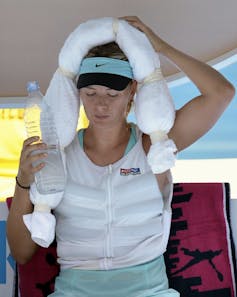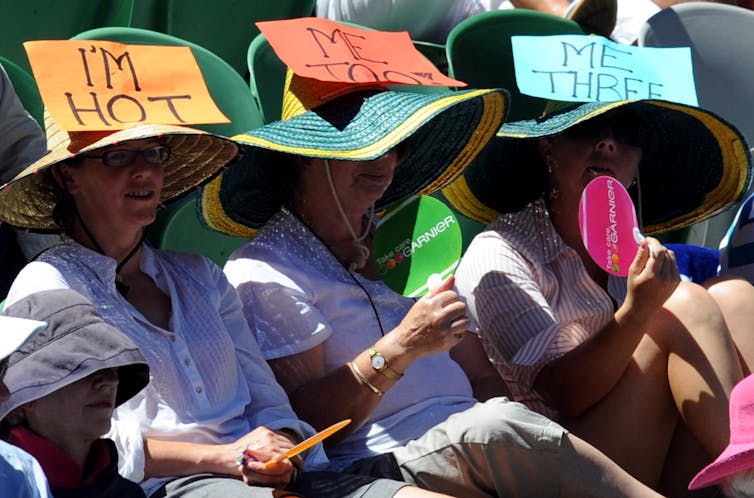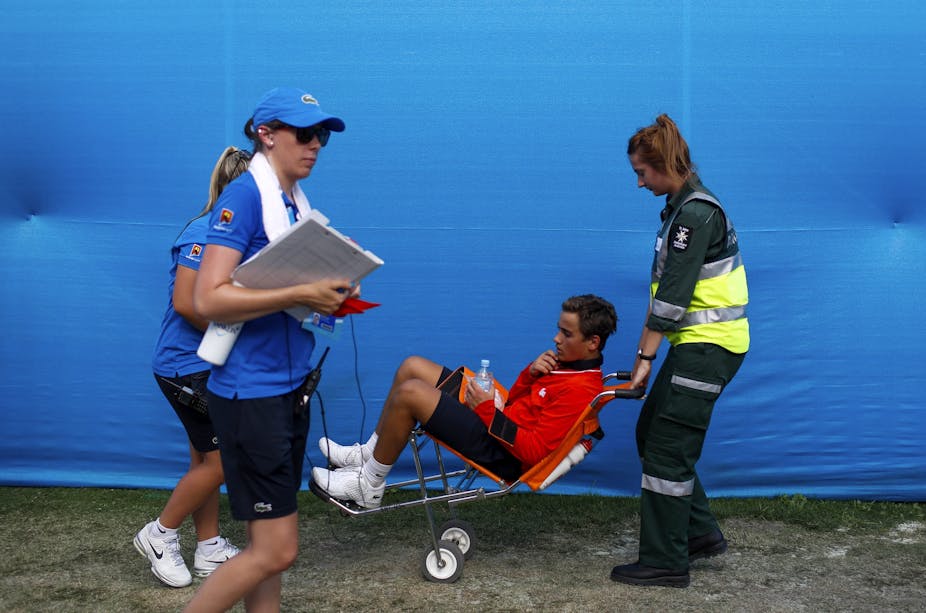On days when the Victorian Health Department issued Heat Health Alerts warning the extreme hot weather substantially increased the risk of heat-related illness and mortality, and outside work on Victorian construction sites ceased, the Australian Open Tennis Championships continued.
Players continued to play; umpires and lines people continued to officiate; ball kids continued to retrieve balls; the numerous employees, contractors and volunteers that make the Open possible continued doing their jobs; and the spectators continued to watch in the stadium.
The decision to continue play in temperatures that exceeded 41.5 degrees Celsius on four consecutive days (play only being halted temporarily on the fourth day) raises issues concerning the intersection of professional sports and occupational health and safety (OHS) law.
Under Victorian OHS law, Tennis Australia, the organiser of the Australian Open, owes its employees, and its independent contractors and their employees, a duty of care to provide and maintain, so far as is reasonably practicable, a working environment that is safe and without risks to health. Tennis Australia also must ensure, so far as is reasonably practicable, that other persons are not exposed to risks to their health or safety arising from the conduct of the Open. This includes the players, volunteers assisting at the Open and spectators attending the Open. (Similar duties are owed in other jurisdictions.)

The decisions to continue to play, and subsequently to stop play, were made in accordance with the Australian Open’s extreme heat policy. That policy uses the Wet Bulb Globe Temperature (WBGT) to decide whether conditions are suitable for play.
The WGBT is the most widely used and accepted index for the assessment of heat stress in industry. It takes into account not just air temperature, but also radiant heat, humidity and air movements. Adjustments are made for things such as physical workload, clothing and work organisation.
The use of the WGBT is consistent with working in heat guidance issued by WorkSafe Victoria, the state’s OHS regulator. However, a number of other aspects of the policy and its implementation are of interest and concern.
Does the Open’s heat policy meet OHS guidelines?
First, the heat policy does not set a predetermined WBGT above which play must be suspended. Rather, the suspension of play is at the tournament referee’s discretion “when the WBGT is equal to or above the pre-determined threshold”. This is designed to give the referee flexibility to continue play in circumstances where the WBGT is expected to be at or above the threshold level for a short period of time only.
Curiously however, the “pre-determined threshold” is not stated in the policy. Tournament officials have declined to say what it is. Poor communication and a lack of transparency appear to have dogged the policy’s implementation.

Second, the decision to suspend play is not immediate: matches in progress continue until the end of the current set. This results in play continuing in circumstances where the tournament referee has, for all intents and purposes, determined that the environment poses a risk to health and safety.
In one match, play continued for more than 50 minutes under these conditions before the set was completed. Luckily there was not a repeat of the 2010 Wimbledon Isner–Mahut match’s 70–68 fifth set, which went for eight hours, 11 minutes. But then again, workplace health and safety should not be a matter of luck.
Third, the policy appears to have been applied only with reference to the players’ welfare. As noted above, Tennis Australia’s legal duties extend beyond the players to include their employees, contractors, volunteers and the paying public.
While these people are not exposed to the same physical workload as the players, nor are they the finely tuned athletes for whom tournament officials have crafted the policy. (It should be acknowledged that Tennis Australia has taken a number of measures to prevent or minimise heat illness in these other groups including the provision of cool drinking water, fans and water misters, and protective clothing for staff and volunteers.)
Fourth, there are signs that the policy may not be operating adequately to protect against heat illness. In the four days of excessive heat, nine players were unable to complete their matches; one player hallucinated seeing Snoopy before fainting; and others complained of vomiting, cramping and other heat-related symptoms. Equally concerning are reports of ball kids fainting and more than 1000 spectators needing treatment for heat.
Should Worksafe have intervened?
In these circumstances, it is reasonable to ask: where was the OHS regulator?
As was the case with the supplements saga and the Essendon Football Club, WorkSafe Victoria remained largely on the sidelines. Would this have been the case had the reported heat illnesses occurred in another industry? Is it possible that OHS regulators, like many in the community, see professional sports differently to other industries - that professional sport somehow is not work and professional sportspersons not workers?
Is it possible that they ascribe to sport a special social and cultural standing - a mystique – that minimises its exposure to the general law (as Professor of Law at Queen’s University Belfast Jack Anderson argues in his book Modern Sports Law: A Textbook)? Are they too deferential to professional sports’ governing bodies?
Today, professional sports are big business. Tennis Australia estimates its revenue and income in 2013 will exceed $185 million. The total prize pool for the 2014 Australian Open is A$33 million, with winners of the singles titles receiving A$2.65 million each, and first-round losers A$30,000. Nostalgic notions of sport as being somehow different no longer apply. Our OHS laws do not exempt professional sports from their ambit; nor should our OHS regulators.
How best to manage extreme heat at an event such as the Australian Open is inherently difficult. The tournament’s organisers need to take into account not just the players’ welfare, but also the welfare of its employees, contractors, volunteers and paying public. The interests of sponsors, broadcast partners and countless other stakeholders also must be factored in.
The “show must go on” pressure is extremely high. In these circumstances, an active OHS regulator ensuring the right questions are asked and answered is all the more important, and would be all the more reassuring.

